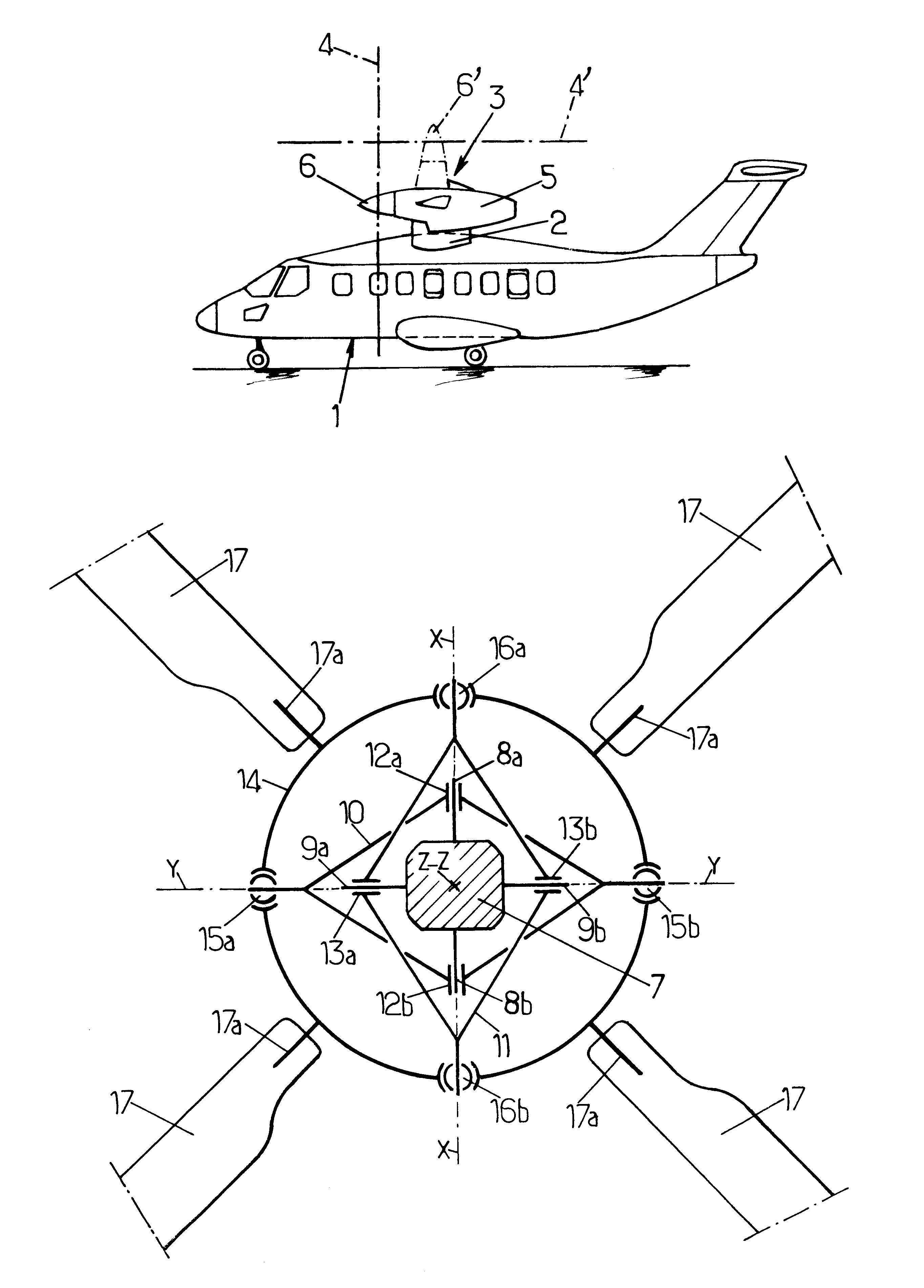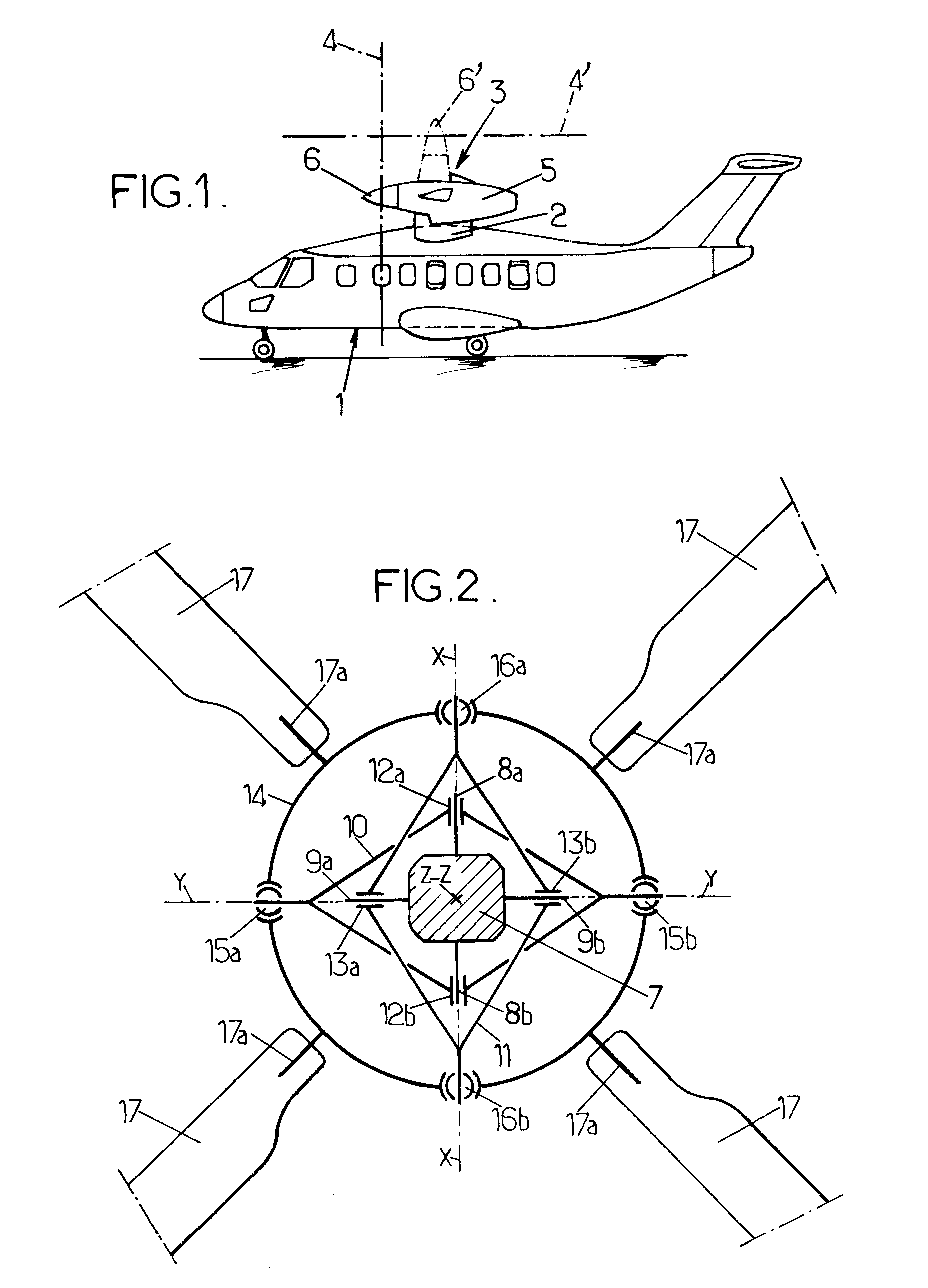Rotary-wing aircraft rotor with constant velocity drive
a technology of rotor and constant velocity, which is applied in the direction of propellers, propulsive elements, water-acting propulsive elements, etc., can solve the problems of blade acceleration and deceleration, reducing the overall performance of the helicopter, and disastrous effect on the service life of the rotor components
- Summary
- Abstract
- Description
- Claims
- Application Information
AI Technical Summary
Benefits of technology
Problems solved by technology
Method used
Image
Examples
Embodiment Construction
FIG. 2 shows schematically in plan a four-bladed rotor with constant velocity drive according to the invention for equipping the tilting rotors of the convertible aircraft described above with reference to FIG. 1.
In FIG. 2, this four-bladed rotor comprises a rotor mast 7, driven at its base in rotation about its longitudinal axis Z-Z, and the end part of which, at the end opposite the base (not shown) provides cantilever support for two drive end fittings 8a and 8b, diametrically opposite relative to the axis Z-Z and projecting radially towards the outside of the mast 7, perpendicularly to the axis Z-Z, and coaxial about a first diametral axis X-X of the mast 7, so that the end fittings 8a and 8b constitute a first diametral drive arm, integral in rotation with the mast 7. Similarly, the mast 7 supports two other drive end fittings 9a and 9b, also diametrically opposite relative to the axis Z-Z and perpendicular to the latter, cantilevered and projecting radially towards the outside...
PUM
 Login to View More
Login to View More Abstract
Description
Claims
Application Information
 Login to View More
Login to View More - R&D
- Intellectual Property
- Life Sciences
- Materials
- Tech Scout
- Unparalleled Data Quality
- Higher Quality Content
- 60% Fewer Hallucinations
Browse by: Latest US Patents, China's latest patents, Technical Efficacy Thesaurus, Application Domain, Technology Topic, Popular Technical Reports.
© 2025 PatSnap. All rights reserved.Legal|Privacy policy|Modern Slavery Act Transparency Statement|Sitemap|About US| Contact US: help@patsnap.com



